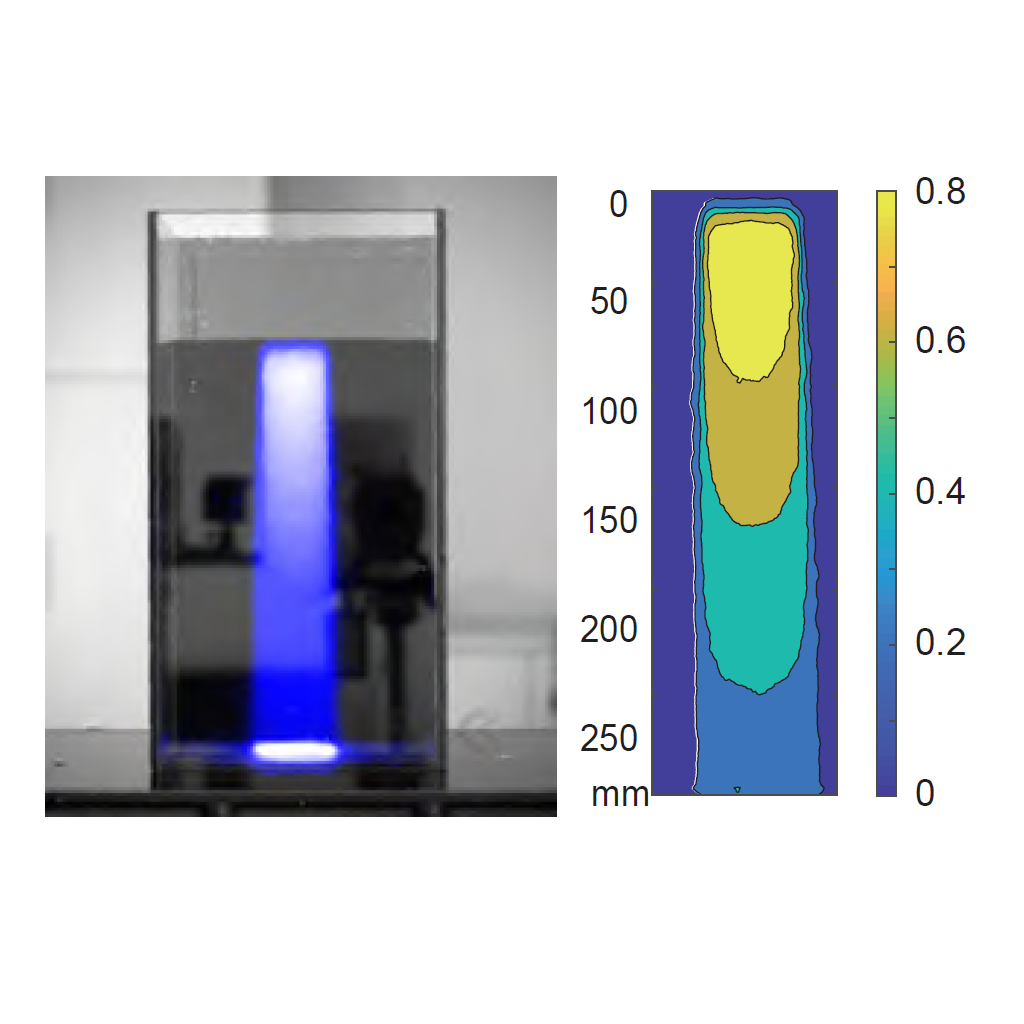Meng, Xiangxi
孟祥溪
Research
Generally, I am interested in the engineering aspects of molecular imaging. I was initially trained to be a chemist and chemical engineer, but gradually got interested in the interdisciplinary frontier of molecular imaging. Trained as an engineer, I am especially interested in the engineering perspective. This includes the construction, modification, and evaluation of imaging systems; development of new imaging strategies; analysis and utilization of imaging data; and other engineering problems encountered in the molecular imaging research.
I am willing to work with people of different backgrounds, including physicians, chemists, data engineers, mathematicians, electrical engineers, and so many other team members and collaborators. Together we can put more intelligence into molecular imaging.
Navigation
| PET-Preclinical | PET imaging physics | Radiotracers |
|---|---|
| PET-Clinical | Clinical data | Dynamic PET |
| Optical Imaging | NIR-II imaging | Cherenkov imaging |
Preclinical Research on PET and Nuclear Medicine
PET imaging physics and instrumentation
Nowadays, commercialized PET scanners have evolved so much, that the physicians and operators are masked from the underlying basic principles of the imaging technique. PET combines the state-of-the-art radiation detection and high-speed electronics hardware with intricate reconstruction algorithms, resulting in a complex system with so many mysteries to explore.
I am interested in the mechanism as well as the clinical relevance of these medical imaging physics as well as instrumentation aspects. That includes:
- The effect of the interaction of the magnetic field on positrons, in PET/MR scanners.
- The clinical impact of correction methods in PET imaging reconstruction.
Highlight
- Meng, X., Liu, H., Li, H., Wang, S., Sun, H., Wang, F., Ding, J., He, L., Chen, X., Jin, L., Dong, Y., Zhu, H., & Yang, Z. (2021). Evaluating the impact of different positron emitters on the performance of a clinical PET/MR system. Medical Physics, 49(4), 2642--2651.
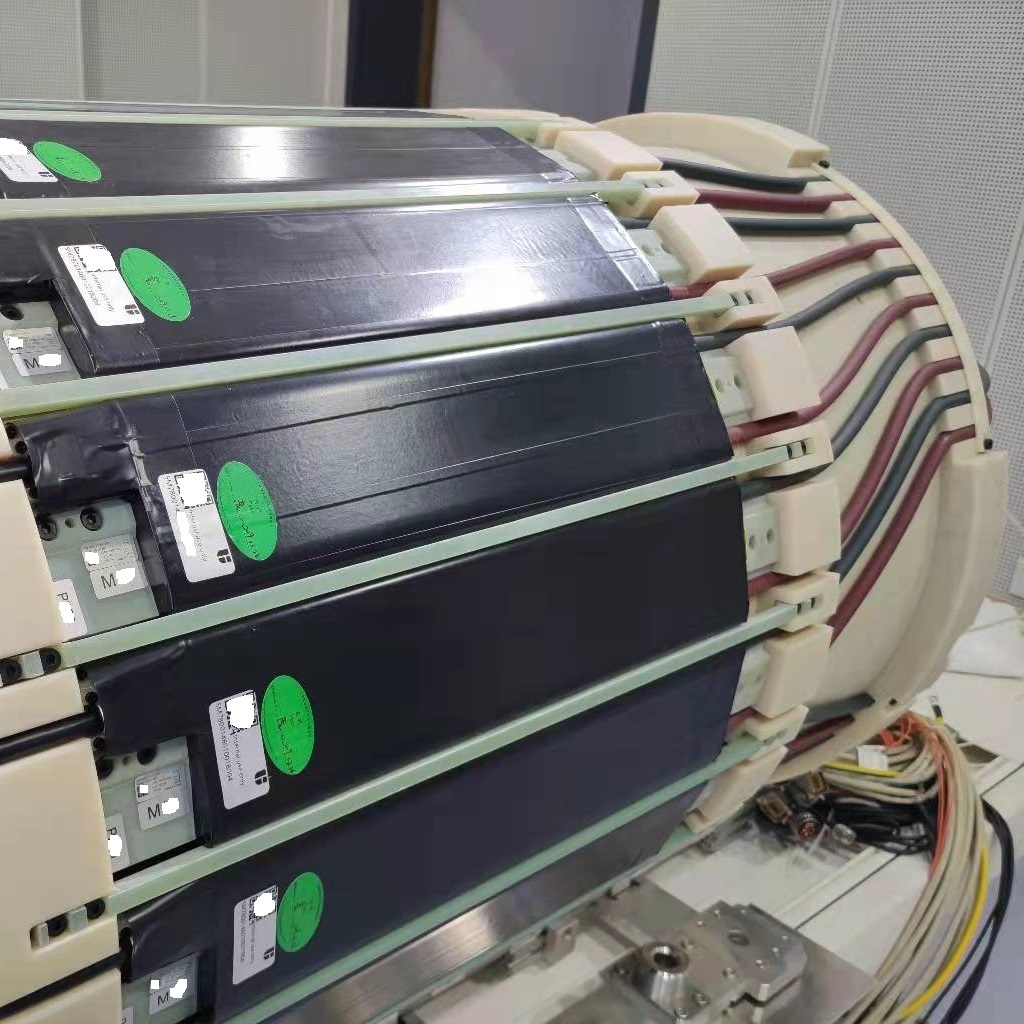
Radiotracers and molecular probes development
For most molecular imaging modalities, the molecular probe is a central nexus, bridging between indigenous biomarkers and the imaging signal. Developing novel PET tracers and molecular probes for classic and novel targets requires synthetic chemistry as well as a systematic evaluation pipeline.
I am actively involved in developing novel radiotracers for preclinical research, which conceive the concept for translational applications.
- Multimodality theragnostic imaging probes, especially nano-probes, combining PET, SEPCT, optical imaging and other modalities.
- Cyclotron production and labeling of novel positron emitters.
Highlight
- Xia, L., Meng, X., Wen, L., Zhou, N., Liu, T., Xu, X., Wang, F., Cheng, Z., Yang, Z., & Zhu, H. (2021). A highly specific multiple enhancement theranostic nanoprobe for PET/MRI/PAI image-guided radioisotope combined photothermal therapy in prostate cancer. Small, 17(21), 2100378.
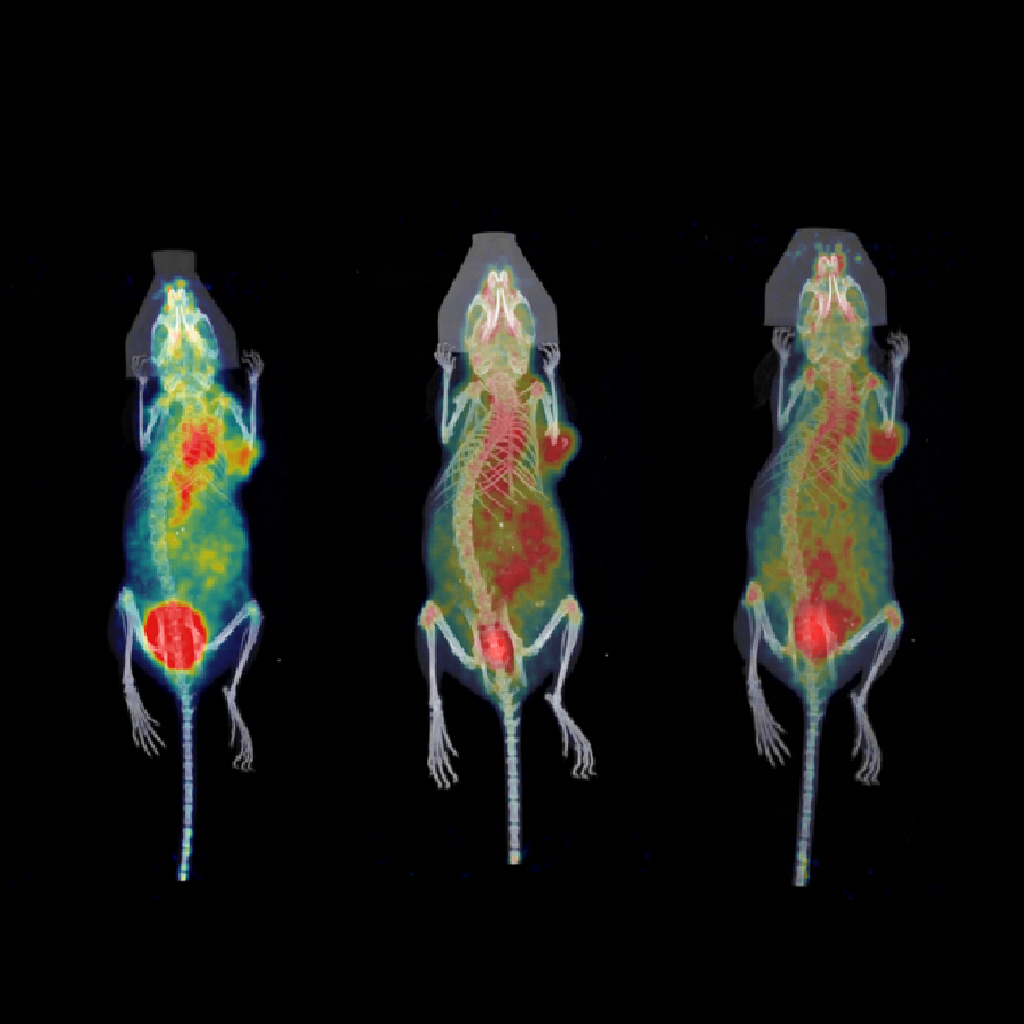
Clinical and Translational Research on PET and Nuclear Medicine
Imaging data utilization in clinical studies
A huge amount of data are generated in the daily routine of a nuclear medicine department, let alone the clinical trials. This so-called "big-data" not only presents a serious challenge for the data curator, but also brings about an opportunity for data mining. The field of medical imaging witnesses a major success of deep learning application, which is fueled by the large amount of imaging data available in the electronic medical records. In our department, we believe the utilization of imaging data of PET and SPECT is driven by concrete needs in medical procedures, instead of solving abstract problems.
I am trying to solve imaging-related problems with data science, which includes:
- Data analysis, medical statistics, statistical inference, and quantitative modeling in clinical studies of nuclear medicine.
- Statistical learning and radiomics in nuclear medicine.
- The clinical application and translational research on deep-learning algorithms in nuclear medicine.
Highlight
- Zhou, N., Meng, X., Zhang, Y., Yu, B., Yuan, J., Yu, J., Zhu, H., & Yang, Z. (2021). Diagnostic value of delayed PET/MR in liver metastasis in comparison with PET/CT. Frontiers in Oncology, 11, 717687.
- Geng, M., Meng, X., Yu, J., Zhu, L., Jin, L., Jiang, Z., Qiu, B., Li, H., Kong, H., Yuan, J., Yang, K., Shan, H., Han, H., Yang, Z., Ren, Q., & Lu, Y. (2022). Content-noise complementary learning for medical image denoising. IEEE Transactions on Medical Imaging, 41(2), 407-419.

Dynamic PET, kinetic modeling, and pharmacology
Dynamic PET imaging involves continuous acquisition after bed-side injection of radiotracers. Dynamic imaging provides valuable quantitative data for kinetic modeling of the tracer, which reveals its pharmacokinetics characteristics. This process involves analysis of the 4D data, which usually require statistical methods in image and signal process. This area is indeed interesting.
Although dynamic PET has a long history, we believe it is far from being fully explored. As we have been equipped with next-generation scanners and latest achievement in data science, we believe it is important to cast an . We are working on topics including:
- Study the tracer kinetic characteristic and in vivo receptor binding behavior with dynamic PET and kinetic modeling.
- Developing novel analysis pipeline involving the 4D data generated from dynamic PET.
Highlight
- Mao, X., Zhao, S., Meng, X., Jin, Y., Kong, H., Yuan, J., He, Q., Liang, D., Yu, J., & Hu, Z. (2022). PET parametric imaging based on MR frequency-domain texture information. Nuclear Instruments and Methods in Physics Research, A, 1029, 166411.
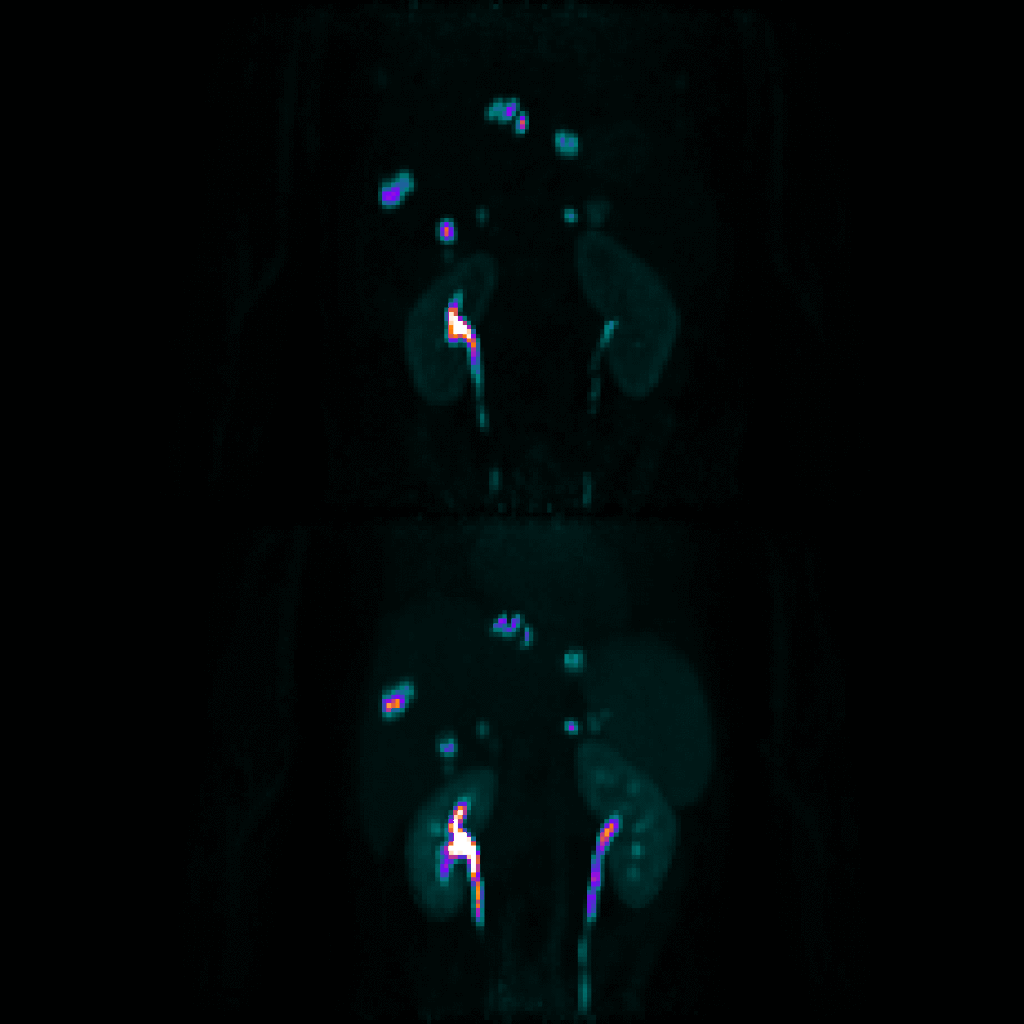
Optical Imaging
NIR-II imaging
The second near-infrared (NIR-II) window describes near-infrared light with wavelength in the range between 1000 nm and 1700 nm, in which the attenuation of biological tissue is relatively low. I have been designing and constructing NIR-II imaging systems for fluorescence imaging applications of small animals since 2017. However, I am still amazed at the emerging achievements of this imaging technique.
With the imaging platforms, various imaging applications have been realized. To name a few, our current platform supports high frame rate real-time visualization of tracer perfusion, direct visualization of bowel movement, visualization of vasculature of tumor models, as well as fluorescence-guided surgery. Several selected research topics we have been working on include:
- Evaluation of various fluorescent theragnostic agents in the NIR-II window, including fluorophores based on semiconductor quantum dots, organic dyes, polymers, transition metal complexes, and other materials or molecules.
- Fluorescence guided lymphadenectomy and other guided-surgery applications using NIR-II fluorescent agents.
Highlight
- Zhuang, P., Xiang, K., Meng, X., Wang, G., Li, Z., Lu, Y., Kan, D., Zhang, X., & Sun, S. K. (2021). Gram-scale synthesis of a neodymium chelate as a spectral CT and second near-infrared window imaging agent for visualizing the gastrointestinal tract in vivo. Journal of Materials Chemistry B, 9(9), 2285-2294.
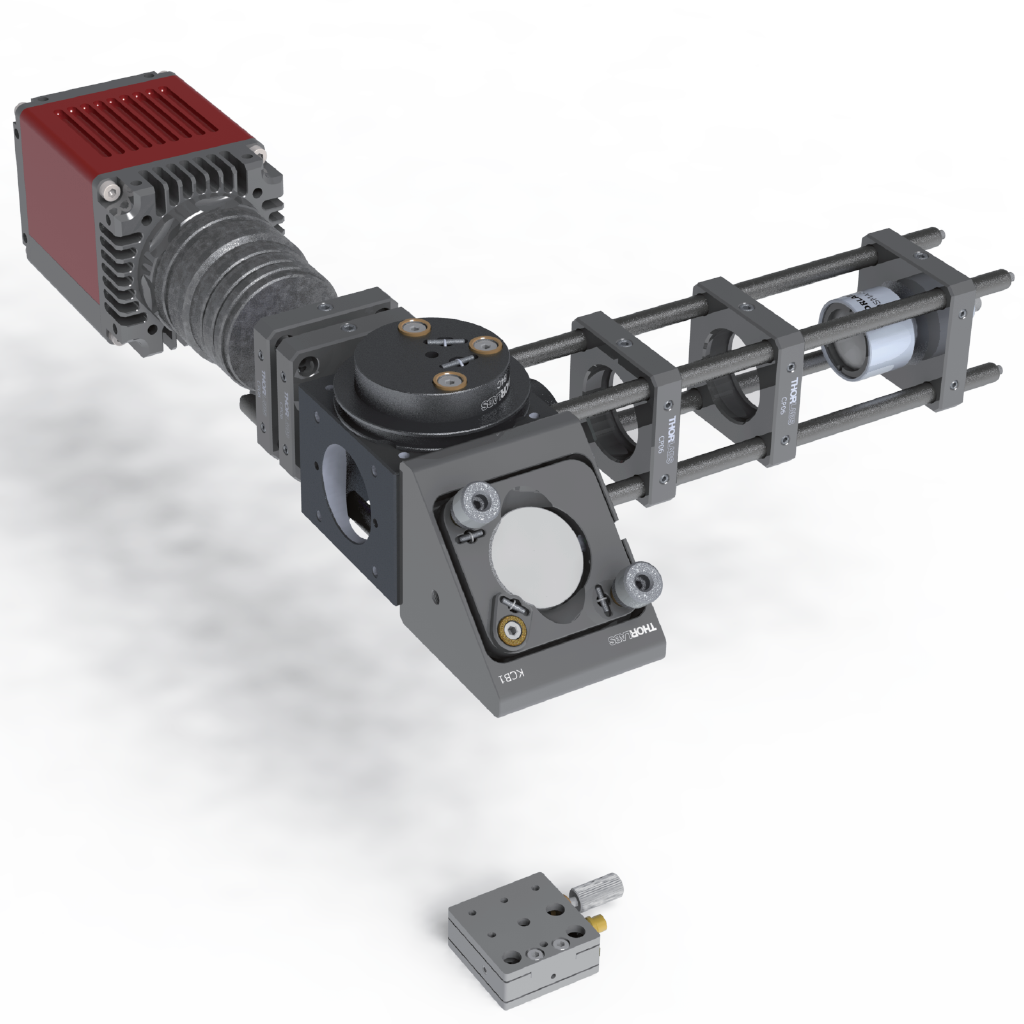
Cherenkov Imaging
Cherenkov light is emitted when a charged particle travels within a medium at a speed greater than the speed of light in the corresponding medium. It has a continuous spectrum, and its intensity decreases with the increase of wavelength. Cherenkov radiation is emitted in nuclear reactors, in various radioisotope solution, and also in radiotherapy linac (including X-ray mode which involves secondary ionized particles). Although the intensity of such a electromagnetic radiation is often very weak, it could be captured with high-sensitivity photon detectors.
I am currently exploring the diagnostic capability of the Cherenkov light, including:
- Cherenkov light emitted from megavolt X-ray linac and radioisotopes, and the capability of the light to excite fluorophores.
- Cherenkov light and the NIR-II window.
Highlight
- Meng, X., Du, Y., Wang, R., Li, Z., Zhu, S., Wu, H., Li, C., Chen, W., Nie, S., Ren, Q., & Lu, Y. (2019). Cherenkov excited luminescence imaging induced by megavolt X-ray beams in the second near-infrared window. Optics Communications, 452, 417-421.
